 In Part 1 of this tutorial series, we explained how to use widgets in WordPress and in Part Two, you learned how to configure a text widget.
In Part 1 of this tutorial series, we explained how to use widgets in WordPress and in Part Two, you learned how to configure a text widget.
In this section you are going to configure other WordPress widgets.
How To Add Post Categories To Your Blog Sidebar
Now that you have configure a text widget containing a clickable help button, let’s configure a widget for Post Categories.
By default, the Categories widget already displays on the sidebar menu. All you have to do, therefore, is place this widget wherever you want your categories to display by clicking and dragging it on your sidebar widget area …

(Post Categories widget)
![]()
Before adding a Categories widget to the sidebar area, we recommend configuring your post categories first …
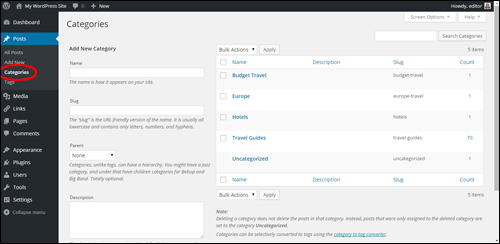
(WordPress Post Categories Panel)
Note: We are currently putting together tutorials on how to configure and use WordPress categories.
Configure the Categories widget settings as shown below:
- In Title: type something that will make sense to visitors, for example, “Choose A Topic…” (1)
- If you have too many categories, check Display as dropdown (this significantly reduces the size of your content by displaying all categories inside a drop-down menu). Leave the box unticked if you want a list of all categories to display on the sidebar. (2)
- You can leave the default settings for the remaining options, or see the additional notes on configuring the Categories widget below.
- Click Save to update your settings …
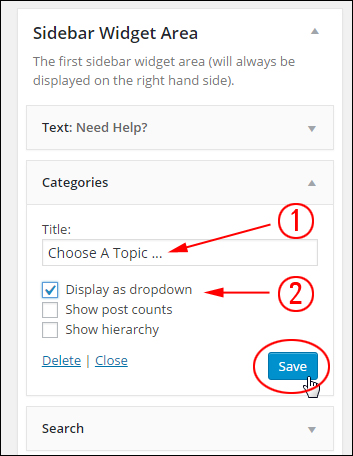
(WordPress Categories widget settings)
Click Visit Site or refresh the page to see how your content will look to your site visitors …
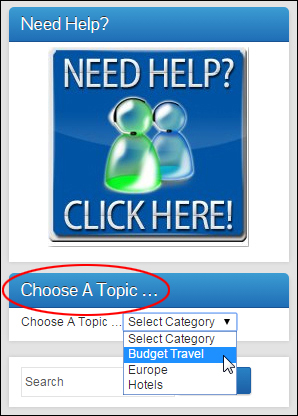
(WordPress Categories widget added to sidebar)
![]()
Tips:
- Change the default Uncategorized post category to something more meaningful.
- If you use nested categories on your site, you may want to check the Show hierarchy box, otherwise leave this box unchecked.
- To display the number of posts published in each category, tick the Show post counts check box …
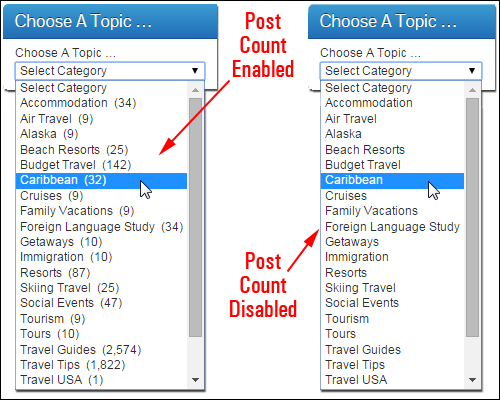
(Category widget options – Post Count Enabled vs Post Count Disabled)
Add A Recent Posts Section To Your Sidebar
The Recent Posts widget normally shows on your sidebar by default. All you need to do is configure your widget.
Click on the widget title bar to configure its settings …
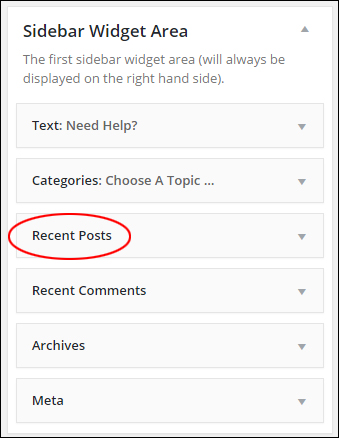
(Recent Posts WordPress widget)
There is really not much to set up here. You can add a title if you want, select the number of posts to display and opt to display post dates. If you want to use the default setting for Number of posts to show, then just leave the widget as is, otherwise enter a number of posts to show and click Save when done …

(Recent Posts WordPress widget settings)
Your most recent posts will be listed on the sidebar navigation menu …

(Recent Posts widget displayed on sidebar)
A step-by-step tutorial is provided on how to create a post in WordPress here: How To Create A New WP Post
Adding Links To Your Site’s Pages
Next, we’ll add a widget to your sidebar navigation area to display page links.
Find a Pages widget in the Available Widgets section …

(Pages Widget)
Drag the Pages widget to your widget section …

(Adding a Pages widget to the sidebar area)
The Pages widget lets you configure the following settings:
- Title: Add a title to display above your links (e.g. “Useful Sections“) (1)
- Sort by: Sort how your pages display: by title (i.e. alphabetically), by page order, or page ID. (2)
- Exclude: Prevent pages from appearing on your sidebar navigation section (3) …
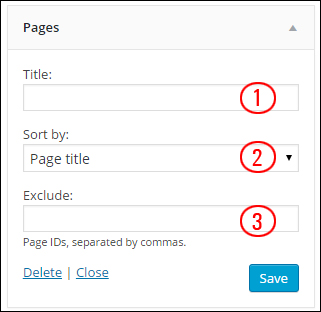
(WordPress Pages Widget settings)
By default, pages will be listed by title in alphabetical order. If you want to display pages using one of the other options, then choose a different method from the Sort by: drop-down menu …
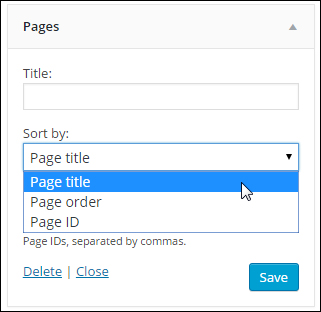
(WordPress Pages Widget settings – sort options)
To prevent certain pages from displaying in your sidebar, type in their Page Ids separated by commas into the Exclude field of the Pages widget …

(WordPress Pages Widget settings – exclude pages)
To learn how to find a WordPress post or page ID, see this step-by-step tutorial: Finding The WordPress Post Or Page ID
Click the Save button when finished and then click Close at the bottom of the widget box to minimize the widget.
Links to your main pages will now show in your sidebar menu …

(Pages Widget on blog sidebar)
![]()
Tip: You can add multiple Pages widgets to the sidebar navigation section. This is handy if you want to display separate groups of pages on your sidebar (e.g. “Products”, “Legal Pages” etc.)
Add Links To Your Sidebar Navigation Area
Now, let’s add a Links widget to display external links on your sidebar.
Before adding the Links widget to your sidebar navigation section, you should first configure your Links section inside your dashboard …
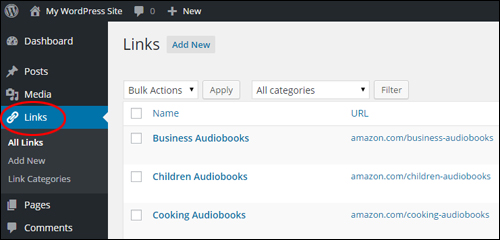
(WordPress Links screen)
Note: Configuring and using the Links feature in WordPress will be explained in separate tutorials.
To add the widget, select a Links widget in the Available Widgets section …
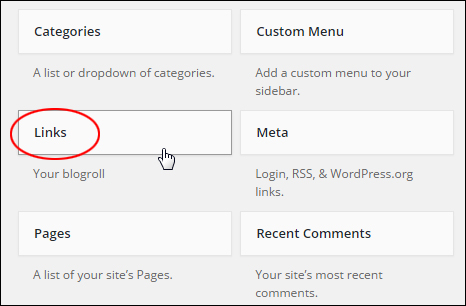
(Links Widget)
Drag the Links widget to your sidebar …

(Making Links Widget active)
The Links widget offers a number of configurable options, including the ability to specify what information to show about your links and how many links you want to display on your sidebar section …

(WordPress Links Widget Settings)
You can add as many separate ‘Link Widgets’ to your sidebar section as you want. As you will see in a moment, this lets you create and display specific lists of links on your site …
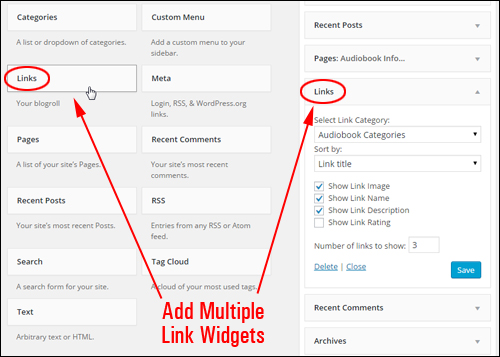
(Add Multiple WordPress Links Widgets To The Sidebar Navigation Section)
You can sort links by Link title, Link rating, Link ID, or display links in Random order …
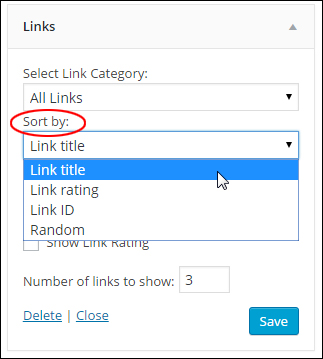
(Links widget: ‘Sort by:’ drop-down menu)
You can also create and display a list of items for a specific category, by selecting a link category from the ‘Select Link Category’ drop-down menu …
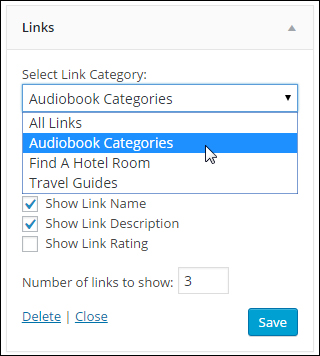
( WordPress Links widget: ‘Select Link Category’ drop-down menu)
When you have finished configuring the Links Widget, click the Save button …
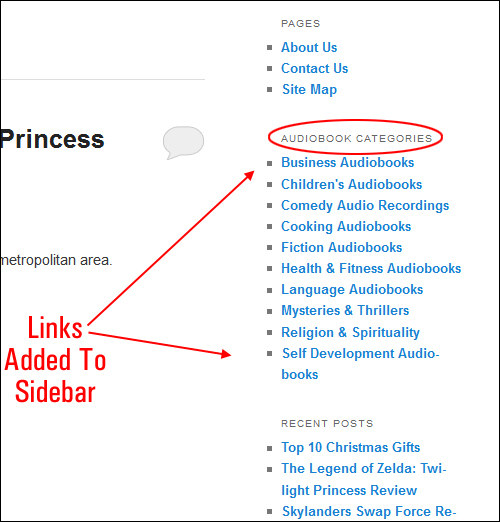
(External links added to WordPress sidebar)
As the above example shows, you can display specific external links to your site visitors (e.g. a list for a specific link category only), and add multiple lists of links to your WordPress sidebar.
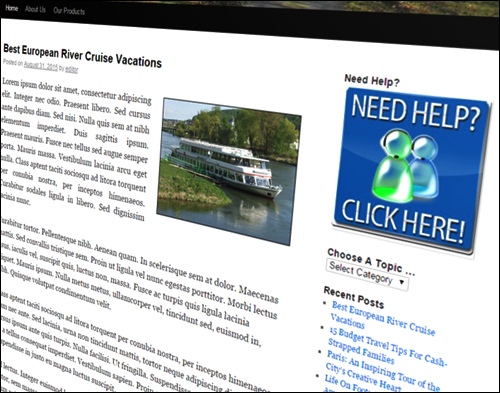
***
This is the end of part three of this tutorial about using Widgets.
To continue reading, click this link:
***
"Learning WordPress has been a huge stumbling block for me. I've been looking for something that covers absolutely everything but doesn't cost an arm and a leg. Thank you so much ... you have just provided me with what I have been looking for! Truly appreciated!" - Tanya